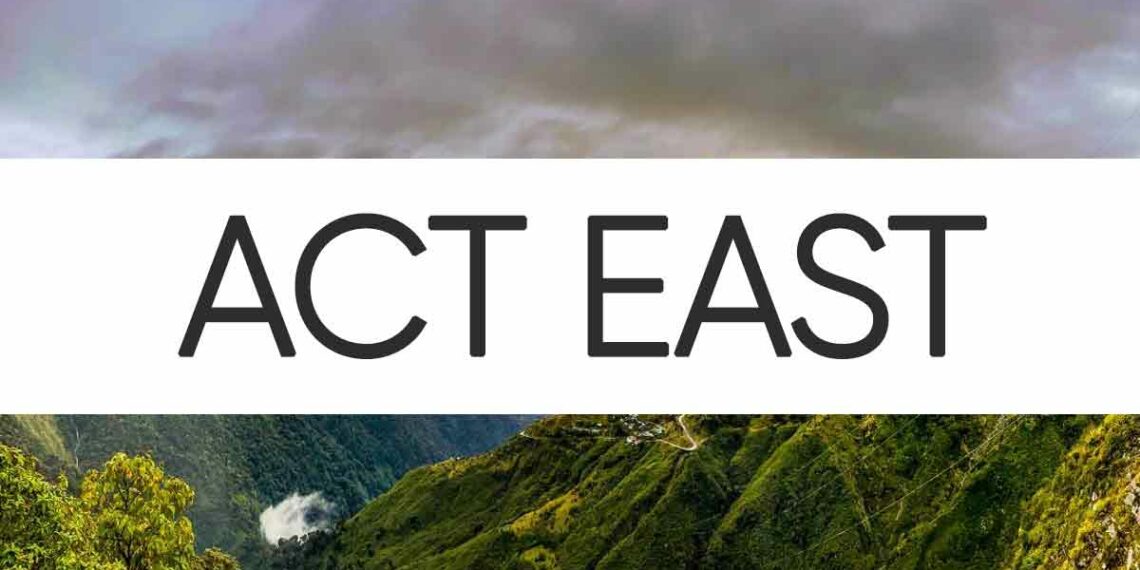India’s ‘Look East’ now called the ‘Act East’ policy launched in the early 1990s aims to promote economic cooperation, strengthen cultural ties and develop strategic partnership with the extended Asia-Pacific region. The country’s northeastern region is the central pillar of the ‘Act East’ policy.
The Act East policy despite having completed near about three decades, has yet to realize its full potential given the region’s vast natural resources, its locational, cultural and demographic advantage vis-à-vis South-East Asia.
Meghalaya Chief Minister, Conrad K Sangma while recently addressing a seminar on the topic ‘Look South Policy vis-à-vis Meghalaya’ stated that the ‘Act East’ policy cannot be generic for the Northeastern region.
He stated every state in North-East will have a relative act directional policy because it is specific to that particular country. Sangma said like for Meghalaya it is ‘Act South’ towards Bangladesh, Manipur- ‘Act East’ towards Myanmar, Arunachal Pradesh- ‘Act West’ to Bhutan.
He also added that within the regional aspects could be broken down in specific areas like for example Mizoram must both ‘Act East’ and ‘Act West’ because it has got Myanmar on its’ east and Bangladesh on its’ west. Hence, India’s policy, say for example concerning Myanmar then the states of Manipur, Nagaland, Mizoram and Arunachal could together work on the policy.
Urging the state to ‘Look South’ from Meghalaya, Sangma highlighted the need for reenergizing ties with the state’s southern neighbor Bangladesh. The Chief Minister’s intervention is timely and must be considered for posterity.
Context of Meghalaya’s Look South
Eight districts comprising of 1,692 villages and a total population of 5,46,199 live along the Indo-Bangladesh border in Meghalaya. The entire southern border of the state totaling 443 km is shared with Bangladesh.
Before partition, Meghalaya had a long connection with Sylhet in Bangladesh. Markets in hills had back then been the meeting place of commerce where producers exchanged their surplus.
Oranges and potatoes from the Khasi and Jaintia hills were in great demand in the plains of Sylhet region. River steamers would transport rubber and iron ore from the hills of Meghalaya through the Meghna river as far as Calcutta.
The partition of the country bought this flourishing trade between the Jaintia and Khasi hills and Sylhet to a grinding halt. Cross-border markets were closed down and riverine cross-border connectivity snapped.
The neglect of trade and connectivity in the Northeastern region including in the state Meghalaya meant that the people living in the border areas had to face the maximum brunt for the lack of connectivity.
Though the interdependence of the plains and the hills of Meghalaya continued post-colonial period, a number of tariff and non-tariff trade barriers that came to exist and informal trade became rampant and the latter thrives even today.
The improvement in relations between India and Bangladesh beginning presented a glimmer of hope for the people living in the borderlands of the two countries. In the last decade, the two countries have established 10 border haats along the border in the states of Meghalaya and Tripura.
Bangladesh has also provided transit-access to India for the use of Chattogram and Mongla ports for movement of goods to and from India. In Meghalaya, Dawki via Tamabil (Bangladesh) has been provided this connectivity with the two sea ports.
The long standing demand from Meghalaya for the development of the road from Hilli in West Bengal to Mahenraganj in Meghalaya through Bangladesh was taken up during the recent visit of the Prime Minister of Bangladesh Sheikh Hasina to India in September 2022.
Once this road is completed it will be one of the shortest route to reach Northeast from the rest of India, bringing down the distance to 80 km and providing an alternative to the route through the congested Chicken’s Neck Corridor.
Also read – Centre looking at agriculture sector in Northeast India with a value chain approach
Need for a regional development strategy
Despite the recent forays in connectivity and initiatives to improve cross-border trade, exports from Northeast comprise only about 5 percent of India’s exports to neighbouring countries of Bangladesh, Myanmar and Bhutan.
Coal, one of Meghalaya’s prime commodities of export to Bangladesh with the rampancy of illegal coal mining, has rightly necessitated a rethink by policy makers for trade alternatives which are ecologically more sustainable.
Besides, lack of road connectivity in the border haats, poor facility of education and health facilities and poor electricity connections has been a perennial problem. Also, many border haats in the Northeastern region have to reopen from COVID-induced closure, again raising fears of informal trade.
As experts have rightly pointed out, there is a need for a regional development strategy to make best use of natural and agricultural resources instead of depleting it through extractive industries. The Northeastern states have to envision a region-based approach of trade which is ecologically sustainable and economically viable.
The ‘Look South’ Policy vis-à-vis Meghalaya, is one of the many initiatives that are required for the Northeastern region. There is a need to restructure the ‘Act East’ Policy and align it to such strategies evolved with the livelihood of people living in the borderlands factored in prominently.
The ‘Act East’ Policy may further be broken down into its components comprising of regional opportunities and threats emanating from ecology, demography, sovereignty and security of the Northeastern states.
In this regard, they may take a cue from Bangladesh which has already begun work on connecting corners of the country with six lane highways. Railway connectivity is also taking place connecting up to the border areas. Dhaka has already chalked out plans how they are to work with the states of Assam, West Bengal, Meghalaya, Mizoram and Tripura.
(The author is an Assistant Policy Analyst with CUTS International, a global public policy think- and action-tank working on trade, regulation and governance. Some of the ideas presented in this article were deliberated upon at the International Interdisciplinary Seminar on ‘Look South Policy vis-à-vis Meghalaya’ organized by Synod College, Shillong on 21-22 November 2022).















